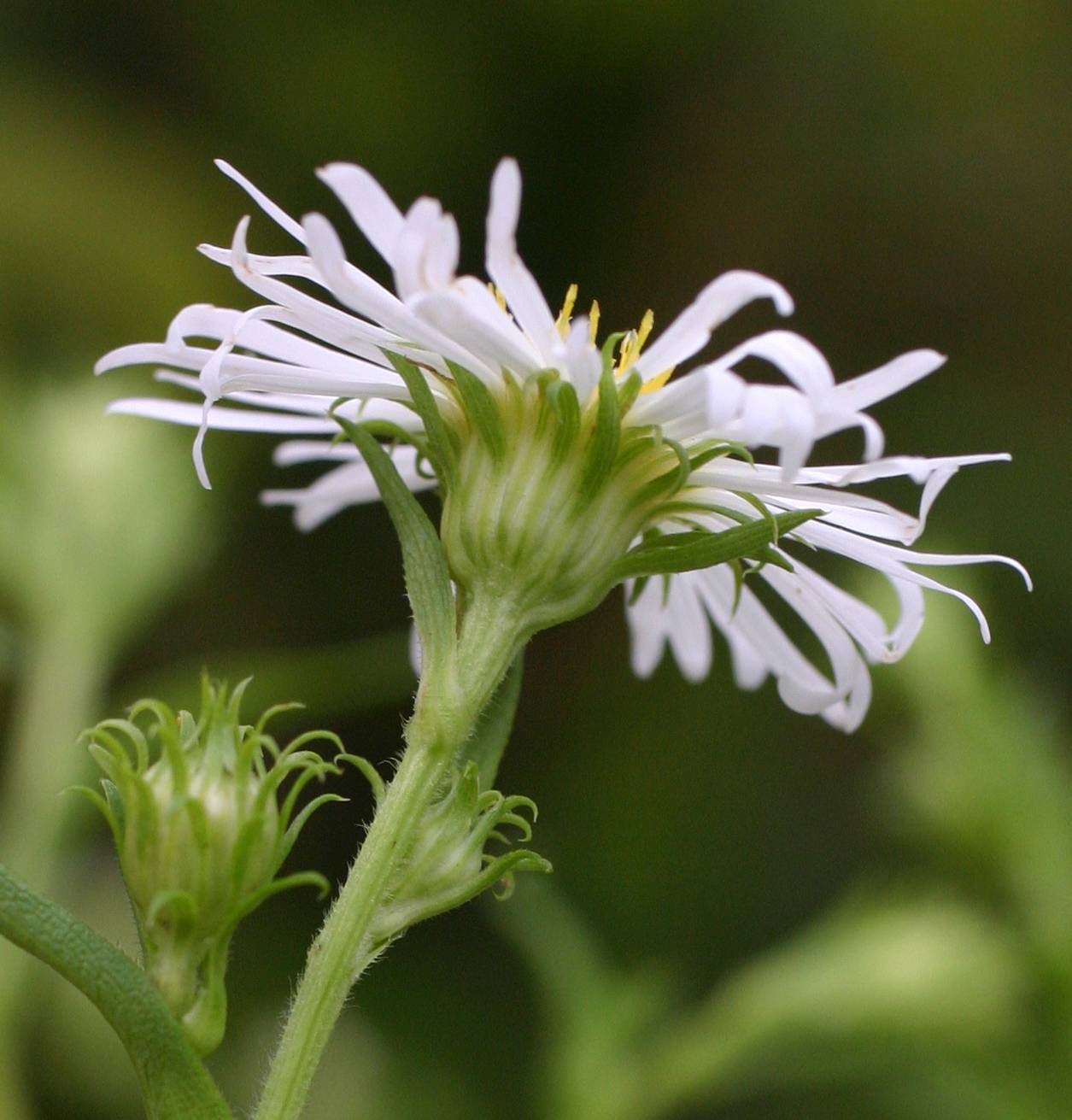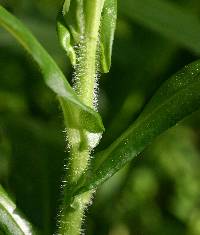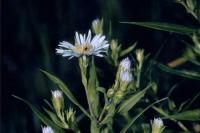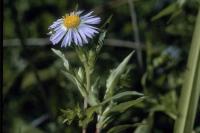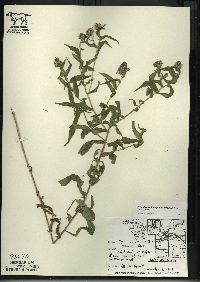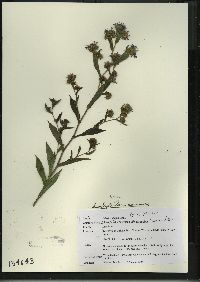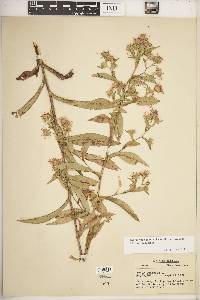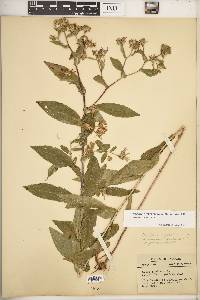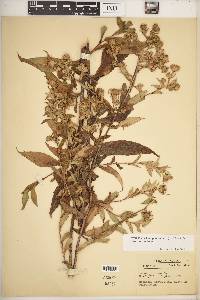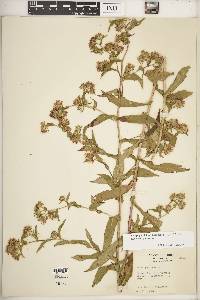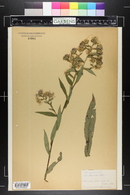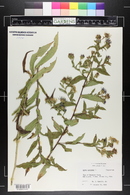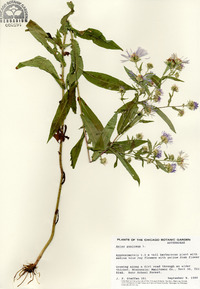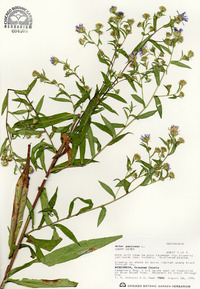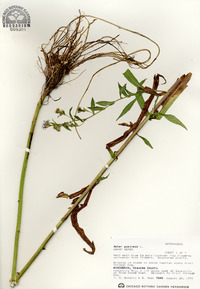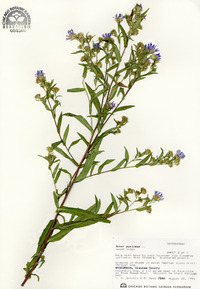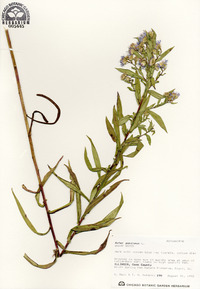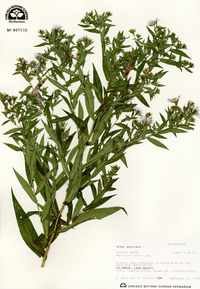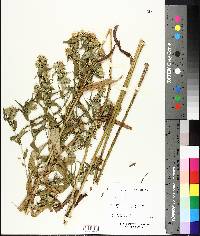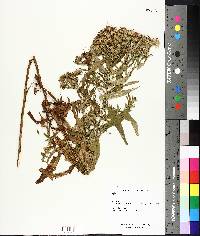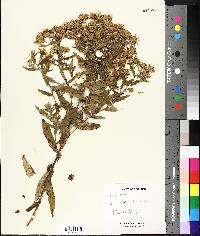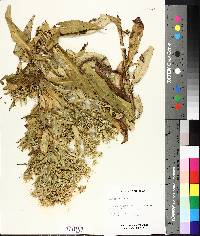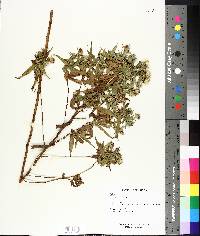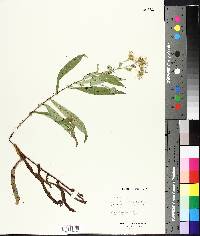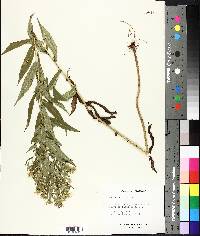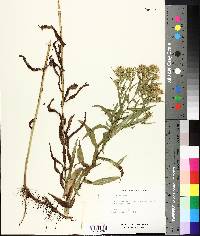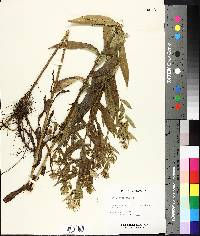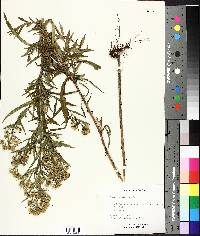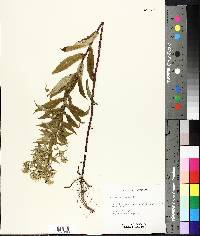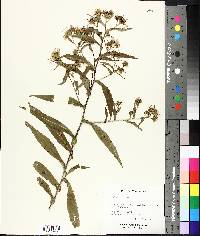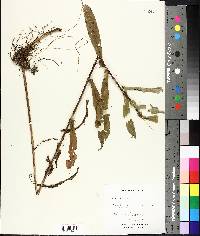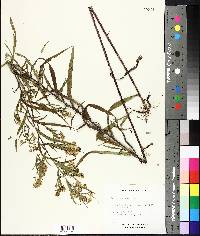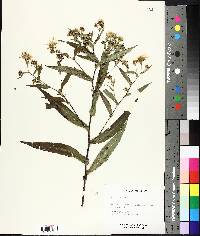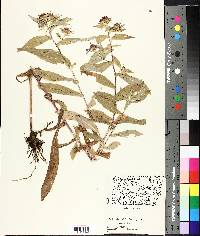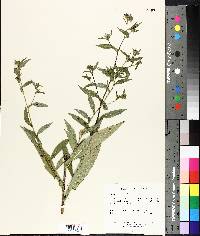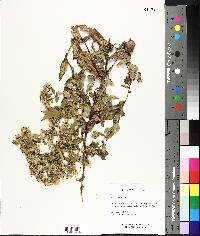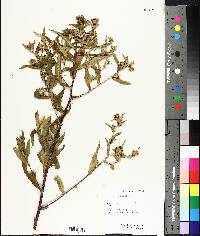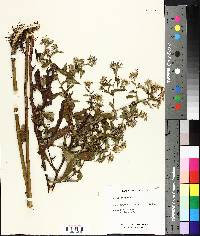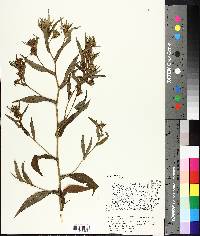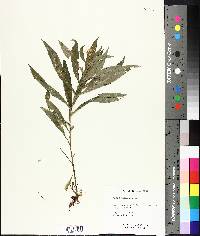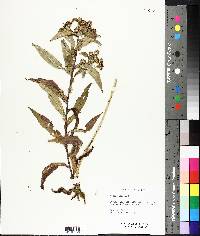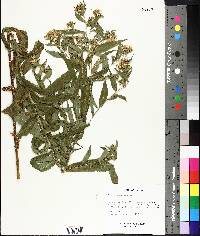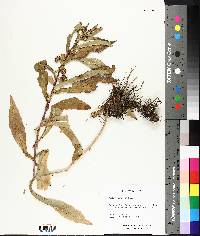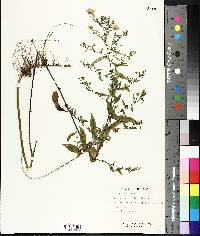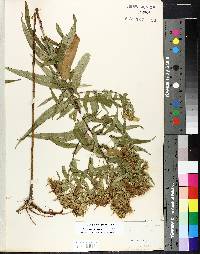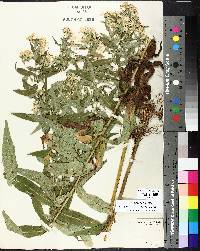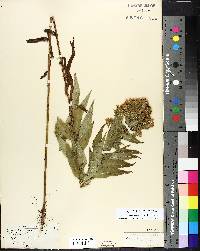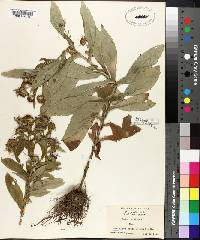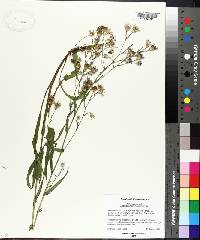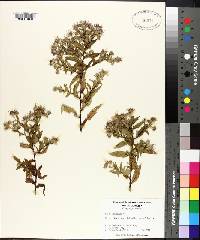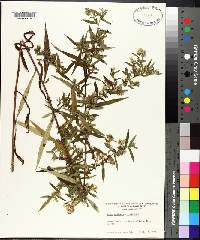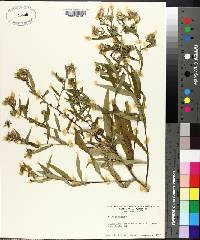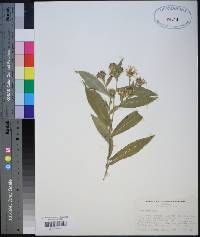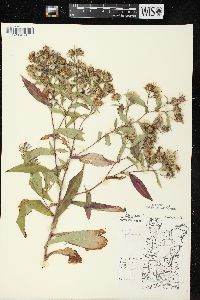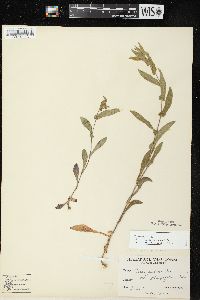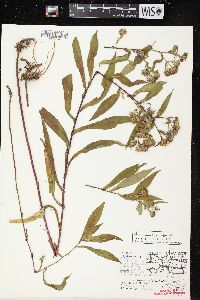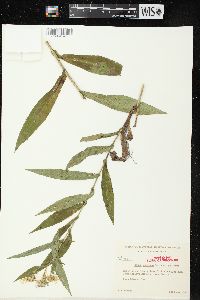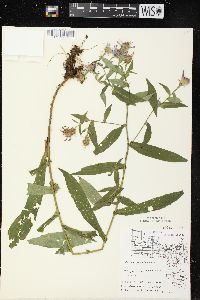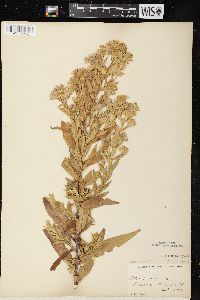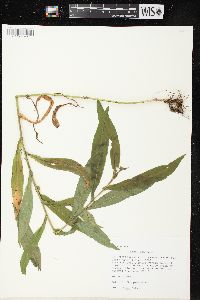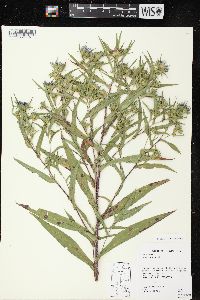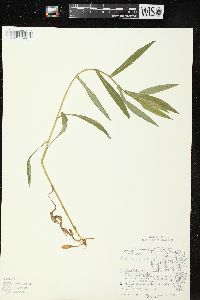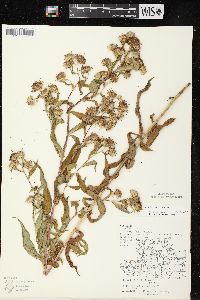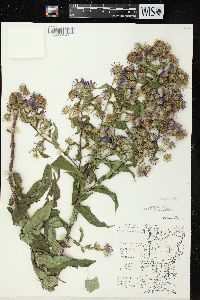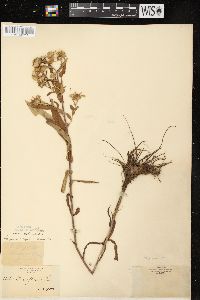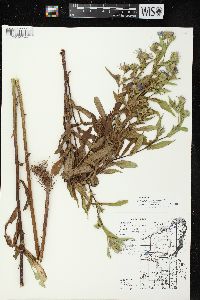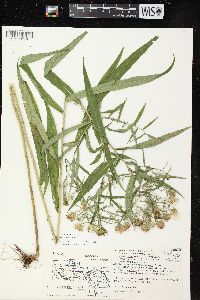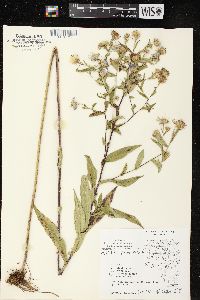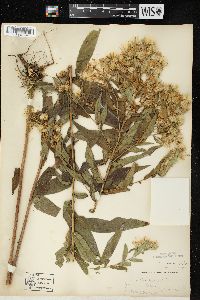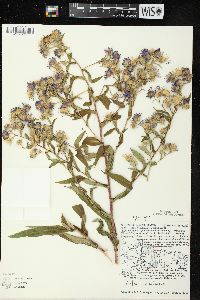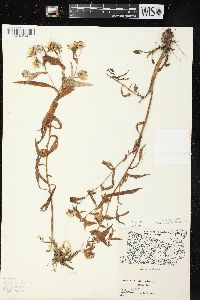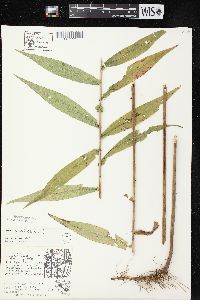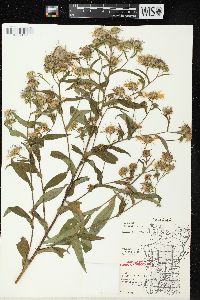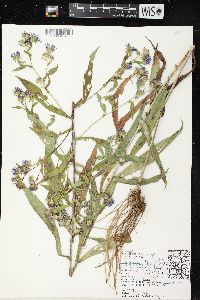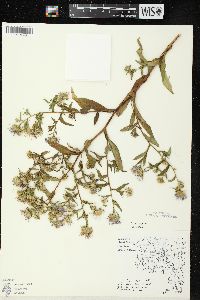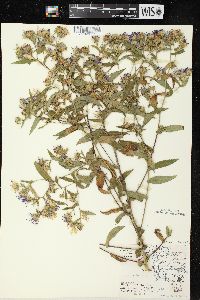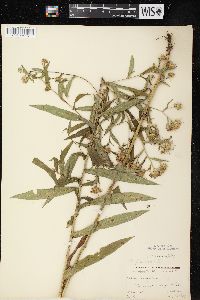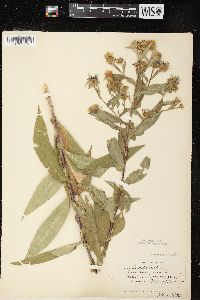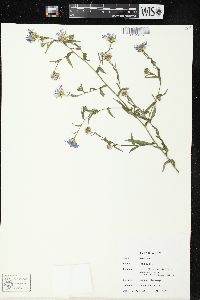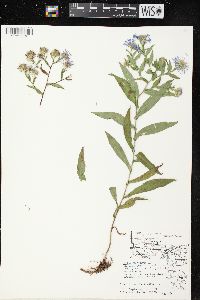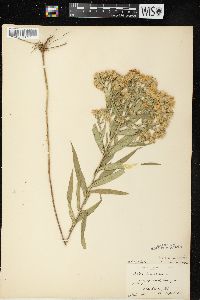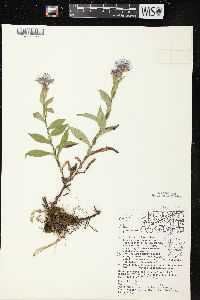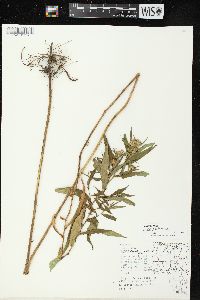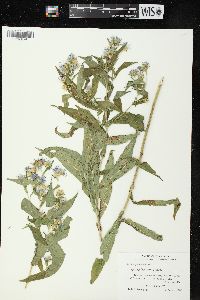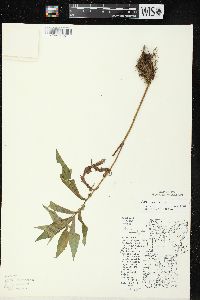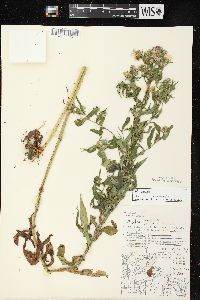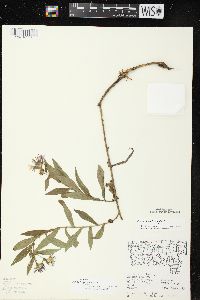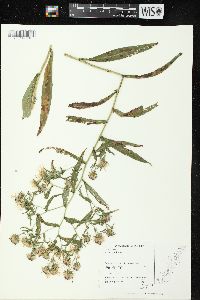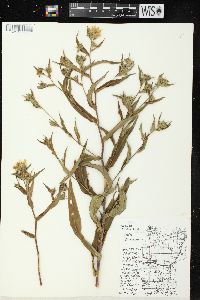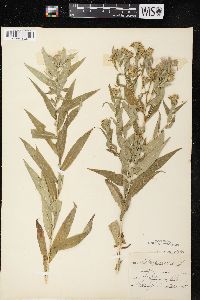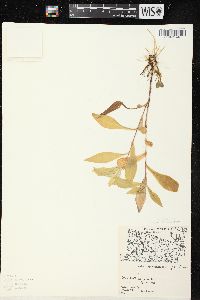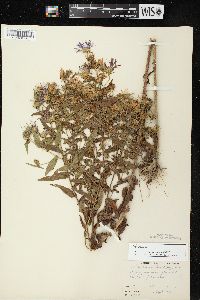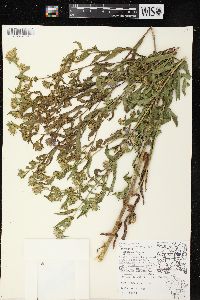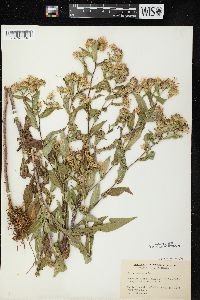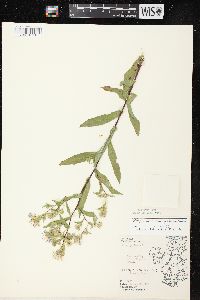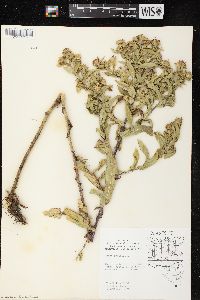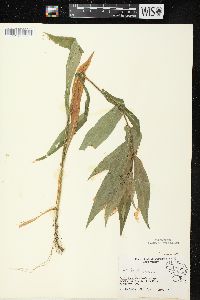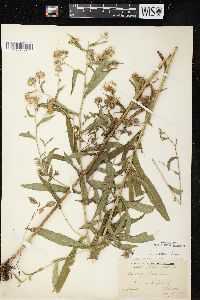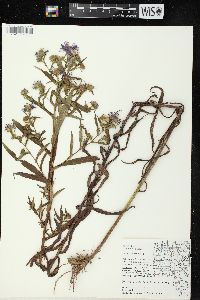
|
|
|
|
Family: Asteraceae
Purple-Stem American-Aster
[Aster puniceus L., moreAster puniceus subsp. puniceus , Aster puniceus var. calvus Shinners, Aster puniceus var. colbyi Benke, Aster puniceus var. crawfordii , Aster puniceus var. demissus Lindl.] |
Perennials (7-)100-250(-300) cm, cespitose; thickly short-rhizomatous or with stout, branched caudices, sometimes long-rhizomatous. Stems 1-5+, erect (straight to distally flexuous, stout 5-11 mm diam., usually reddish purple), usually densely to sparsely hirsute or hispid, glabrescent, often proximally glabrate, sometimes glabrate. Leaves (dark green, not crowded) thin, margins remotely serrate to sometimes entire, scabrous, apices acute or acuminate to subcaudate, mucronate, abaxial faces glabrate, ± densely pilose along midveins, adaxial glabrate to scabrous; basal withering by flowering, subpetiolate to petiolate (petioles ± winged, bases dilated, sheathing), blades spatulate to oblanceolate or lanceolate, 30-10+ × 3-20+ mm, bases attenuate to cuneate, margins remotely crenate-serrate to denticulate or entire, apices acute or acuminate to rounded; proximal cauline withering by flowering, petiolate to subpetiolate (petioles widely winged, bases auriculate, clasping), blades lanceolate or oblanceolate to oblong, elliptic or elliptic-oblong, (55-)70-200(-220) × 10-40 mm, usually progressively lengthened to mid, bases ± attenuate to cuneate or auriculate and clasping; distal sessile, blades oblanceolate or lanceolate to oblong or elliptic-oblong (sometimes nearly panduriform), 8-160 × 1-40 mm, progressively reduced distally, strongly so and linear in arrays, bases ± strongly auriculate, clasping, margins subentire or entire. Heads in open, paniculiform (often corymbiform-looking) arrays, branches widely spreading to ascending, sparsely to moderately leafy with ± large leaves. Peduncles 0.2-3+ cm, ± hispid or hirsute to villous, bracts 0-3, lanceolate or linear-lanceolate to linear, distal often subtending heads. Involucres campanulate, (6-)8-12(-15) mm. Phyllaries in 4-6 series, oblanceolate-spatulate to linear, subequal, bases indurate 1 / 5 - 1 / 2 , margins not scarious (outer) to narrowly scarious, erose, hyaline, sparsely ciliolate, green zones linear-lanceolate, outer sometimes ± foliaceous, to linear (inner), apices ± spreading at tip when foliaceous, long-acuminate to caudate, mucronate to apiculate, sometimes purplish tinged, faces glabrous or ± hispid. Ray florets 20-50(-60); corollas usually pale to dark blue, lavender or purple, seldom white or pink, laminae (7-)12-18(-21) × (0.9-)1.4-1.8 mm. Disc florets 30-50 (-90); corollas yellow or cream becoming pink o Symphyotrichum puniceum is one of the widest ranging species in the genus, growing from the edges of the prairies to the Atlantic coast, and from the Gulf coast of Texas to southern Ungava Bay (northern Quebec). Several taxa have been recognized within this variable species. Here, we segregate Symphyotrichum firmum as a distinct entity. The tall, pink-rayed S. elliottii of the outer coastal plains is also distinctive, despite reports of hybrids with S. puniceum var. puniceum where their ranges overlap (see G. L. Nesom 1997b). A recently described member of the complex, S. rhiannon, is an ultramafic endemic from North Carolina. Here, within S. puniceum, we recognize two varieties, the variable and widespread var. puniceum, and var. scabricaule from the inner Gulf coastal plains, following Nesom, who also offered a useful summary of the infraspecific taxonomy of the species.
Plants with a short stout rhizome or caudex, sometimes with short thick stolons as well; stem stout, 0.5-2.5 m, simple or much branched above, uniformly spreading-hairy at least under the heads, conspicuously spreading-hispid (or occasionally glabrous) below; lvs chiefly cauline, sessile, auriculate-clasping, rather distantly serrate to occasionally entire, scabrous to subglabrous above, glabrous or spreading-hairy along the midrib beneath, lanceolate to oblong or elliptic-oblong, 7-16 cm נ12-40 mm; heads few to many in a leafy infl; invol 6-12 mm, its bracts slender and loose, scarcely or not at all imbricate, at least the inner long-acuminate to attenuate, often some of the outer enlarged and leafy, but still narrow; rays 30-60, blue (rose or white), 7-18 mm; achenes glabrous or nearly so; 2n=16. Swamps and other moist places; Nf. to Sask., s. to Va., Ill., and Neb., and in the mts. to Ga. and Ala. Gleason, Henry A. & Cronquist, Arthur J. 1991. Manual of vascular plants of northeastern United States and adjacent Canada. lxxv + 910 pp. ©The New York Botanical Garden. All rights reserved. Used by permission. |
This project was made possible in part by the Institute of Museum and Library Services [MG-70-19-0057-19].
Powered by Symbiota

